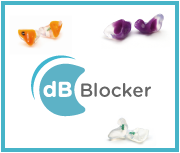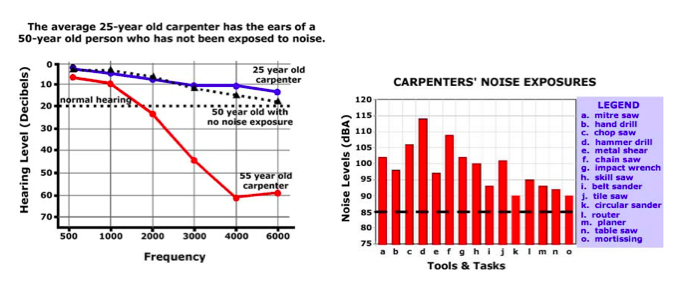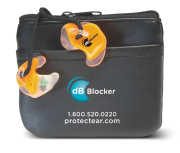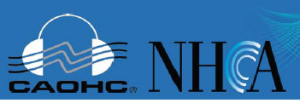 I was recently perusing the ISHN Facebook fan page and saw this article posted. It is a very interesting article, something definitely worth sharing since one of the most forgotten senses is hearing. As individuals we tend to take our hearing for granted, until it is too late. In a noisy world full of sound devices, traffic & construction, congestion and especially noise in our workplaces it is important to be cognoscente of the potential harm we could be doing to our hearing. enjoy the read. Hearing Protection
I was recently perusing the ISHN Facebook fan page and saw this article posted. It is a very interesting article, something definitely worth sharing since one of the most forgotten senses is hearing. As individuals we tend to take our hearing for granted, until it is too late. In a noisy world full of sound devices, traffic & construction, congestion and especially noise in our workplaces it is important to be cognoscente of the potential harm we could be doing to our hearing. enjoy the read. Hearing Protection
Hearing Loss by Occupation
Is your job causing hearing loss? Your hearing is an incredibly valuable asset in the workplace. Unfortunately, some workplace environments may be more damaging to your eardrums than others. The National Institute for Occupational Safety and Health estimates that 22 million US workers are exposed to potentially dangerous levels of noise in the workplace each year. Unhealthy noise levels are one of the most common causes of hearing loss, and can lead to shocking statistics in some occupations. If you work in one of these six loudest workplaces, you may want to consider the effects your work environment may be having on your hearing.
Hearing Loss in Manufacturing
Hearing loss is the most commonly recorded occupational illness in manufacturing, accounting for 1 in 9 recordable illnesses. The reasons behind these staggering numbers are obvious, with all the large and loud machinery in this line of business. And this problem is all over the nation. Manufacturing is one of the largest industries in the U.S., which means hearing loss can spread rapidly. In fact, a study in Michigan reveals that more than half of all cases of permanent workplace hearing loss is caused by the manufacturing sector. Learn about Personalized Hearing Protection for Manufacturing Companies.
Hearing Loss in Construction, Carpentry and Mining
Whether outside your window, on your walk to work or anywhere else on the street, you may be painfully familiar with the extreme noise levels of construction sites. Now imagine working there. For the country’s construction workers, these sounds can be particularly hazardous to hearing health. Long periods of exposure to noise over 85dB is considered dangerous to one’s hearing, yet many of the most common construction tools make noise well above this cautionary value. Let’s consider one the noisiest yet most common construction tools: the hammer drill. This ear-shattering tool registers at nearly 115dB. With these dangerous decibels, whether you are performing construction work at home or for pay, make sure to wear the right kind of ear protection. Learn more about the Industry. Now Available: SMART MUFFS for double hearing protection
Miners and carpenters are particularly affected due to a similarly noisy tool set, as the next couple of graphs can attest.
 Many common carpentry tools can be hazardous to your ear health.
Many common carpentry tools can be hazardous to your ear health.
Hearing Loss as a Motorcycle Courier
Traveling on a motorbike beyond 50mph, can expose the driver to up to 90dB of noise under the helmet. The maximum recommended exposure limit at this level is 2.5-3 hours at a time. While slow city traffic might be more manageable, it’s more the day-in/day-out exposure, as well as longer travels on open roads that do the damage. Courier or no courier, all bikers can be affected. Learn how bikers can protect their hearing.
Hearing Loss in Entertainment and Nightlife
All that hubbub can hurt your ears. Loud music is one of the most common causes of hearing loss. Employees at bars, nightclubs, or concert hallsmight be enduring dangerous sound levels every night of the week.Most nightlife hotspots operate at levels well above 100 dB, which means the mood music may be doing some mega damage. Bartenders, performers, and security should all be well aware of these dangers, and seek out special earplugs specifically made for musicians. This also goes for rock stars. There are available hearing protection for individuals and musicians.
Hearing Loss for Airport staff
If you have ever taken a look at an airport runway, you may notice the brightly colored ear protection worn by airport traffic directors. These are not just a fashion statement, but indeed a necessary precaution. The sound of a jet engine is one of the loudest auditory occupational hazards, with sound levels at a shocking 140dB. Sound waves are invisible, but at this level, they pack a whopping force. You can find the appropriate hearing protection for Airport and Security staff.
Hearing Loss for Shooting Range Marshals
Guns and other firearms are loud, ask any military veteran. Shooting range marshals, if not carefully protected with heavy duty on-ear protectors or custom made ear plugs, can be exposed to up to 140dB of noise exposure during any given day. One more reason to think twice about that next excursion to the shooting range or hunting trip.
Fortunately, there are many preventative measures in order to mitigate the effects of workplace-induced hearing loss. Appropriate ear protection, in addition to the right diet, can keep your hearing health top-notch. And as always, Audicus is here to keep your hearing at its very highest…. and discreetest. Learn More hearing loss in the Shooting industry.
Article by Patrick Freuler. Read original article here.


